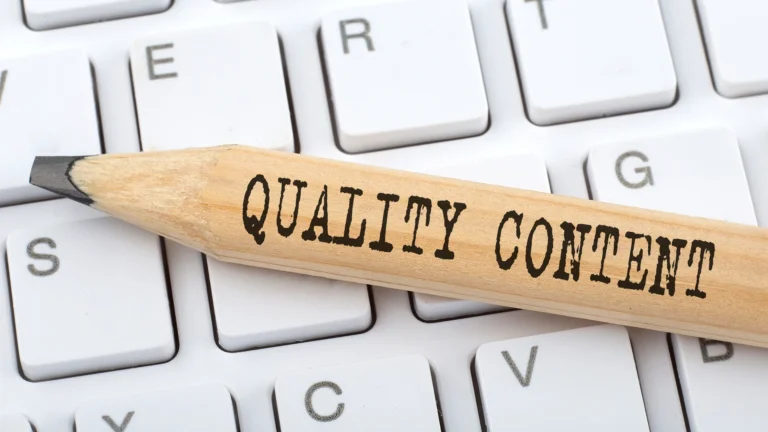Are you looking to learn how to find a reasonable billable rate for your marketing agency?
I wondered the same thing when I started my own web agency, and now I can share what I learned about calculating billable rates to settle on a number that’ll benefit your marketing business. Read on to learn more!
@connectivewebdesign How Do Some Marketing Agencies Calculate Their Billable Rate? #marketingagency #billablehours #pricingstrategy #marketingagencyblueprint ♬ original sound – Rodney Warner
What is a billable rate?
Essentially, a billable rate is the amount you charge a client per hour for your marketing services. One of the driving factors behind your billable rate is the number of billable hours it takes to complete the project.
Your agency’s billable hours, along with other key pieces of data, give you the keys you need to solve the equation that yields your billable rate.
In this guide, I only talk about one of the ways marketing agencies calculate billable rates. It’s a simple formula that I find works very well in general, and changing it to suit your business isn’t difficult. As your agency grows, you might find other ways to determine the best rates for your services.
For now, we’ll focus on this equation:
Business cost / billable hours = billable rate
Don’t worry — I’m about to tell you exactly how to get the numbers you need to plug into this formula.
Calculating your marketing agency’s billable rate

Okay, we know we need two things: business cost and billable hours. To find these variables, we need to do some calculations using data like your available work hours, utilization rate, and business expenses.
Some of these numbers are going to be very similar, if not exactly the same, for many agencies. Of course, you’re bound to arrive at different conclusions based on the size of your company and the growth stage it’s in.
For the sake of this guide, I’ll use a general example to show and explain my work.
Get your potential billable hours
In this section, I’ll guide you through determining your agency’s billable hours, which are the hours you spend working on client projects.
In other words, billable hours are the hours you’re generating revenue.
To start, we’ll figure out how many available hours an employee at your agency would most likely have. The majority of full-time employees work 40 hours a week, and there are 52 weeks in a year.
40 hours/week x 52 weeks/year = 2,080 hours/year
“Wait!” you’re saying, “What about PTO?!”
Clearly, we need to bring this number of hours down to something more realistic. We must account for how many vacation days, sick days, and holidays your employee might take off.
Let’s say your agency observes eight paid holidays, gives two weeks of vacation, and provides eight days of paid sick time. That’s 30 days of paid time off, or 240 hours in total.
2,080 hours/year – 240 PTO hours/year = 1,840 available work hours/year
We’ve now estimated that one of your employees is available to work 1,840 hours in a year.
However, we all know that, usually, 100% of that time isn’t going toward projects or revenue-producing tasks, so we can’t say for sure that we have 1,840 billable hours.
That brings us to the utilization rate.
Figure out the utilization rate
While it would be nice to be able to bill every hour an employee works, it typically doesn’t work that way.
Depending on their position, an employee might spend four hours of their day working on billable tasks and use the other four hours to work on administrative duties or training. In that case, they utilize half of their time generating revenue, equating to a 50% utilization rate for that day.
If you want to know your employee’s utilization rate over the course of a year, you would need to know how many hours they billed that year and the number of hours they were available to work. Then, you plug those numbers into this formula:
Hours billed / hours available x 100 = utilization rate
If you can calculate your employees’ utilization rates, you’ll have a pretty accurate number to work with. In some cases, you might need to estimate the percentage of billable time. For a marketing agency, revenue-producing positions can have utilization rates ranging from 60 to 100%.
For the next step, I’ll use a 70% utilization rate and our total available hours from the previous section.
0.70 utilization rate x 1,840 available work hours/year = 1,288 billable hours/year
That’s right — we now have one of our key variables: the total billable hours.
Now, we’ll move on to figuring out the business cost.

Calculate your expenses and profit margin
We’re one step closer to calculating the billable rate, but there’s still another variable we need for our formula. In this part, I’ll walk you through calculating your business cost, which includes your overhead expenses, employee salaries, and target profit margins.
You can do this part of the calculation in a few ways, but I’m going to focus on one of the more popular methods full-service marketing agencies, or any service-based businesses for that matter, use to calculate business cost.
What is this secret method, you ask?
It’s actually very simple. We’ll multiply the employee’s salary, which I’ll say is $70,000, by 3.
$70,000 salary x 3 = $210,000 business cost
Why did I use the number 3? It represents your overhead costs, profit, and a little wiggle room for unforeseen costs. However, the multiple can change depending on your company’s size and expenses.
For example, a fully remote agency doesn’t have to rent an office or hire certain staff types, so they might lower that number to 2 or 2.5.
If you’re not sure which multiple to use, you can do some more math. (We’re almost done, I promise!)
Make a list of everything you spend money on to keep your agency running, such as:
- Rent
- Software
- Subscriptions
- Salary
- Benefits
- Taxes
Then, add all of those expenses up. Let’s say your total was $150,000.
I don’t know about you, but I don’t work for free, so let’s calculate how much we need to add to make a reasonable profit. A typical profit margin target is 20%, so I’ll use that.
$150,000 total expenses x 1.20 profit margin = $180,000 business cost
Calculate the billable hourly rate
At the beginning of this guide, I told you we needed to figure out the two variables for this formula:
Business cost / billable hours = billable rate
After lots of dividing and multiplying, we know which numbers to get our billable rate.
In my example, I ended up with 1,288 billable hours and a $210,000 business cost.
$210,000 business cost / 1,288 billable hours = $163 per hour
Your hourly billing rates can vary quite a lot, depending on your employees’ utilization rates, salaries, overhead, and desired profit. Analyzing and calculating this information helps you identify areas to optimize for profitability.
For example, you might set a target utilization rate for your team. When your employees work more billable hours, your ability to make a profit goes up.
If your employees are always close to maxing out their utilization rate, you’ll know it’s time to hire another team member for support. By repeating this process of tracking utilization, hiring employees, and adding new services, you’re growing your agency.
As your agency grows, your expenses will go up, but you’ll also have better cost efficiencies that allow you to earn more revenue while keeping costs down.
How to calculate a blended hourly rate

Projects usually involve multiple team members, and they likely won’t work the same hours. They also have different salaries and billable rates, making it a little more complicated to price your work.
One of the ways you can handle this is to use a blended hourly rate.
((Average employee cost + overhead) x profit margin %) / billable hours = blended hourly rate
This formula is similar to the one I already showed you, but instead of a general business cost, we use the average cost of all the employees working on the project.
Here’s an example:
- Employee 1 salary: $40,000
- Employee 2 salary: $60,000
- Employee 3 salary: $90,000
- Total salary cost: $190,000
- Blended salary cost: $63,333
Now, I’ll fill out the blended hourly rate formula using numbers from my previous example and my new average cost.
(($63,333 avg. cost + $150,000 overhead) x 1.20 profit) / 1,288 billable hours = $198 per hour
When calculating a billable rate per employee, the most expensive employees are those with the highest salary and experience. A blended hourly rate allows you to give a middle-of-the-road price for a project with team members ranging from seasoned developers to entry-level employees.

Conclusion
Calculating billable rate might involve a lot of math and spreadsheets, but it’s pretty simple when you have all the data in front of you.
Keeping track of all these metrics helps you maximize your marketing agency’s profitability and recognize opportunities for growth, so doing the math literally pays off!











